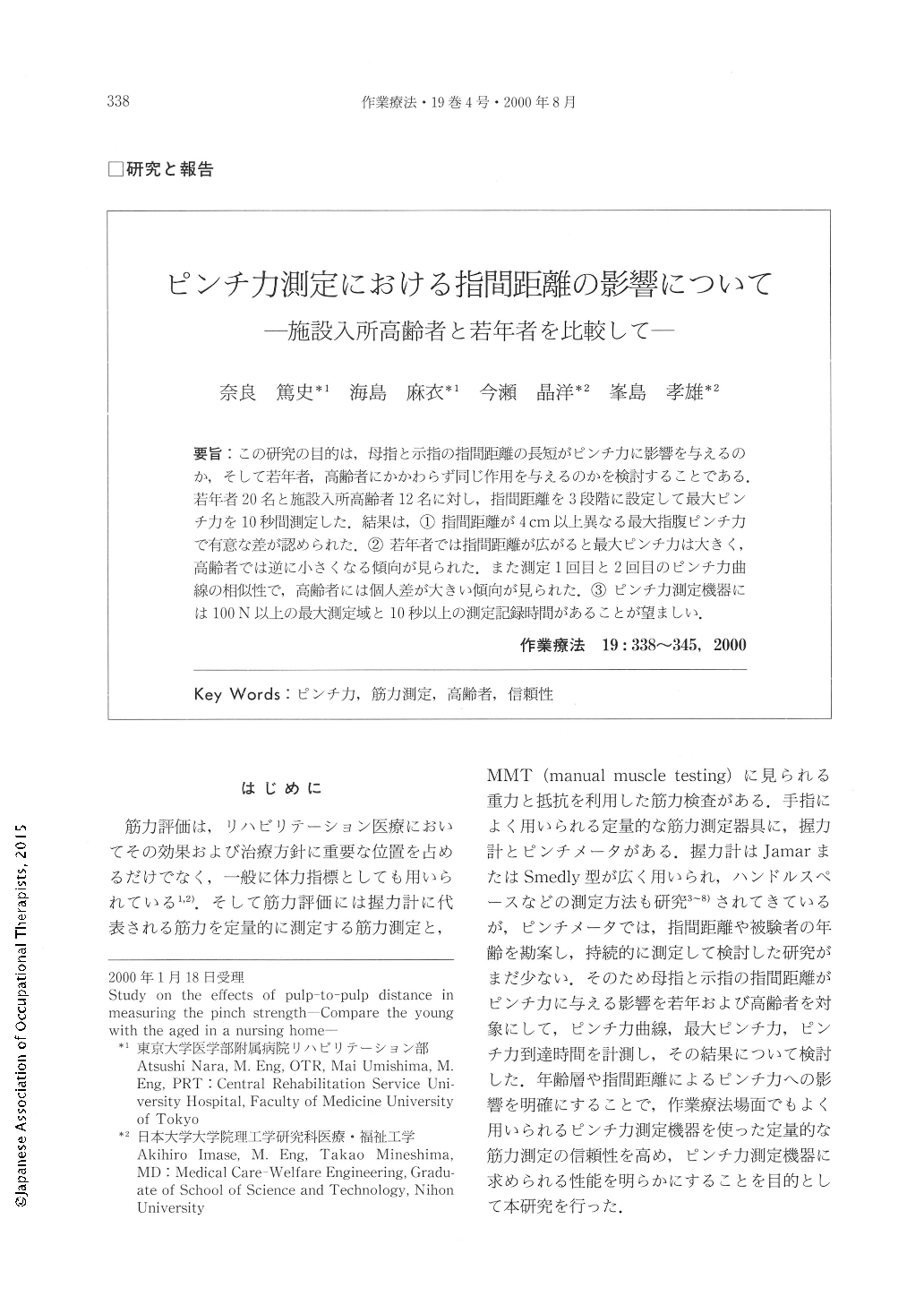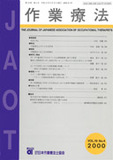Japanese
English
- 販売していません
- Abstract 文献概要
- 1ページ目 Look Inside
- 参考文献 Reference
- サイト内被引用 Cited by
要旨:この研究の目的は,母指と示指の指間距離の長短がピンチカに影響を与えるのか,そして若年者,高齢者にかかわらず同じ作用を与えるのかを検討することである.若年者20名と施設入所高齢者12名に対し,指間距離を3段階に設定して最大ピンチカを10秒間測定した.結果は,①指間距離が4cm以上異なる最大指腹ピンチカで有意な差が認められた②若年者では指間距離が広がると最大ピンチカは大きく,高齢者では逆に小さくなる傾向が見られた.また測定1回目と2回目のピンチ力曲線の相似性で,高齢者には個人差が大きい傾向が見られた.③ピンチ力測定機器には100N以上の最大測定域と10秒以上の測定記録時間があることが望ましい.
The aim this study was to assess the effects of pulp-to-pulp distance in measuring the pinch strength of the young and the aged.
Subjects included twenty young healthy adults (the average age was 28. 9) and twelve elderly healthy persons (the average age was 82. 2). We measured the pinch strength, which lasted ten seconds, with three different distances (8 mm, 53 mm,93 mm), and obtained the pinch versus time curves, the maximum value and the time taken to reach the peak value. The results were as follows: 1) There was significant difference in measuring the pinch strength by using over 4 cm of pulp-to-pulp distance. 2) The younger subjects, with a wider pulp-to-pulp distance, can obtain a more powerful pinch strength ; on the other hand, aged subjects obtained a more powerful pinch strength with a narrower pulp-to-pulp distance. Therefore, the effects of pulp-to-pulp distance varied from are group to age group. 3) For measuring the pinch strength, the appliance has to provide the maximum range of 100 N or more and record time of 10 s or more.

Copyright © 2000, Japanese Association of Occupational Therapists. All rights reserved.


